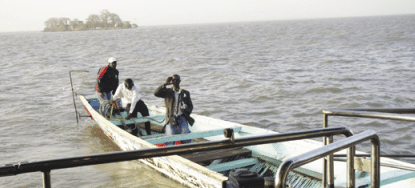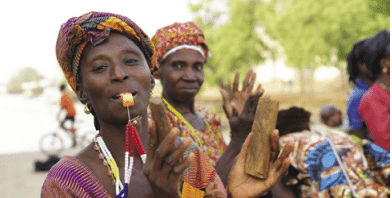A Gambia River journey took this writer to the depths of a region rich with wildlife, culture and world heritage sites.
By Ramdas Iyer
Upstream from the Atlantic and not too far from the banks of the Gambia River, I was standing amidst a concentration of 11 circles of 200 megalith stones erected more than a thousand years ago, mostly for burial purposes. The Wassu Circle, a UNESCO World Heritage Site, is one of Africa’s greatest anthropological and archaeological puzzles; the stones are all that remain of what must have undoubtedly been a great and sophisticated culture.
Sailing from the mouth of the Gambia River, I embarked on a journey of 300km to the interior from the Atlantic coast at Banjul, formerly Bathurst, the capital city, to observe a land defined by the river and ravaged by the Atlantic slave trade. One of the smaller countries of Africa, it is a strip of land 450km long
and 25km to 50km wide on either side of the river. The Gambia River is a major river in West Africa, running 1,120km from north Guinea westward through Senegal and The Gambia to the Atlantic Ocean. It is only navigable for about half that length.
In Banjul, I was particularly impressed by the local museum, cramped but with memorabilia from the colonial era, including a passenger ticket from Bathurst to Liverpool on the MV Apapa. It also houses an impressive collection of masks, musical instruments and Yoruba artifacts. I got an opportunity to
purchase some of the African art, mostly from Mali, Ghana and Nigeria at the Royal Albert market, a great place to observe and mingle with the local population.
A few hours sailing from Banjul brought me to St. James Island in the middle of the river. Under British presence since 1651, it became an important slave trading post in The Gambia. In 1976, St. James Island became famous due to Alex Haley’s bestseller book Roots and the story of a slave, called Kunta Kinte.
The island was renamed Kunta Kinteh Island and is now a UNESCO World Heritage Site. I had taken a copy of the book with me and identifying the areas in the book with an actual visit was quite emotional.

Each day, we used motorized pirogues to reach the fishing villages or to enjoy the beautiful Bao Bolong
wetland reserves that boast over 250 species of birds. Adjacent to these wetlands is the large Kiang West National Park where I went on an all-day foot safari. Lions have long been extinct in The Gambia, along with the other animals in the Big Five. But a diverse presence of hyenas, leopards, spitting cobras and pythons made for an interesting outing. Further upstream, we arrived at the bustling Gambian port town of Kuntaur, the last inland stop along the river that is navigable for ocean-going vessels like mine.
Walking around town and its adjoining villages revealed the importance of peanuts as the chief cash crop of The Gambia. Not too far from Kuntaur, I was excited to visit a quintet of uninhabited islands that constitute the Gambia National River Park.
The southernmost, Baboon Island , is the home of the Chimpanzee Rehabilitation Project established by
American anthropologist Janis Carter in 1979, to provide a home for chimpanzees released from the laboratories of the western world. Over 100 of these primates live on these islands where no one is allowed to set foot except scientists. I photographed several of the apes including younger generations that are now free in a land where they had become extinct a century ago. At this point in the protected river, one could see a plethora of wildlife including hippos, crocodiles, and the red colobus and green vervet monkeys.
At the Kuntaur pier, we were met by the ‘Kankurang’ and a local dance group. Believed to have spiritual powers, the Kankurang dispense justice and ward off evil spirits.
I tired dancing with the Mandinka women and the Kankurang at the pier to the sound of drums and whistles. With local river pilots familiar with the topography of the river bottom, we made our way back to Banjul.
Gambians, who still suffer economically from the ravages of slavery four centuries ago, showed me that poverty alone cannot destroy the human spirit and the ability to deliver a sparkling smile.
